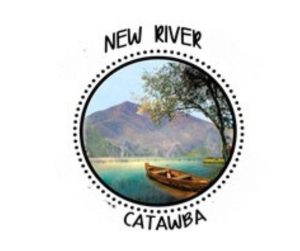
The History of the New River Catawba
Our members are the modern-day descendants of the original Catawba people who migrated here around 1200 AD. In our language, Tla Wilano, we are known as the Wagahattamnegleechee Odah. The Catawba originated as an Eastern Siouan Nation who, since “time immemorial” have occupied lands in the mountains, foothills and Piedmont regions of North Carolina and Virginia. Our origin stories place our ancestral home in the Ohio River Valley. Current archeological evidence agrees. (Moore p. 49 & 195). By 1200 AD a lack of resources, overcrowding, and attacks from Iroquois raiding parties forced our people to seek refuge in the Carolina’s and Virginia. (Carlson p. 46).
Once in North Carolina, we eventually divided further into the Tribes that are today known as the Catawba, Saponi, Tutelo, Occanechee and others as described by the first European explores, i.e. DeSoto, Pardon, Lawson and others. (Moore p.19-24) (Carlson p. 45-46). The reason for this separation was to conserve resources. Isolation eventually led to many different dialects, but each was a variation of our original Siouan. When those first explorers came through what would one day be called the western North Carolina our people had called the land home (Wichisniup Ulta) for many centuries. But fate and time would one day reunite us as we finally found a home in the north western mountains of North Carolina.
By 1713, our ancestors, devastated by war, disease, and encroachment of their lands, (Carlson p. 53-60) reunited to join under one banner at Fort Christanna. It was this “confederation of Eastern Siouan tribes that would finally coalesce into the New River Indians. While at Fort Christanna our people signed a “Treaty of Peace” with Governor Spotswood at Williamsburg, VA in 1714 (Carlson p.57)
After the fall of Fort Christanna and the death of the Catawba Chief Winitashkahi, our people were again forced to flee. We sought refuge in various parts of the South Eastern US, settling primarily in the North Carolina.
By 1743 it was reported that the Catawba’s and other related tribes, at that time were living along the Flatt River in NC. (Carlson p. 119-129). By then our numbers had decreased to fewer than 400 warriors, which included remnant populations from 20 separate tribes. (Moore p. 14) Figure #1 details the Tribes considered to be part of the Catawba Nation in 1743.
Some of these “Catawba” settled in eastern North Carolina, becoming the 3-state recognized Saponi Tribes. Some, like us, returned to the mountains, foothills, and Piedmont regions of NC. Around the time of the Passage of the Proclamation of 1763, many of these western NC Catawba would move back to their old home, “squarely back in the part of the Appalachians where.. “our … “families hunted and gathered “… more than a century prior. (Carlson p.132) Here these Catawba families formed a new Community along the New River. Today we are known as the New River Catawba. Just as our Ancestors were known as the New River Indians. (see Carlson p. 140-181 for a more in-depth description of our people along the New River). Throughout the ensuing years we have remained banded together as a people. Here we continue to practice our traditions and our culture, proud to be New River Catawba.
Written by Jamie Harris
Research provided by New River Catawba Research team
This history is a brief summery of the information concerning our tribe’s history. A more detailed version can be found in “The History of the New River Catawba “.
